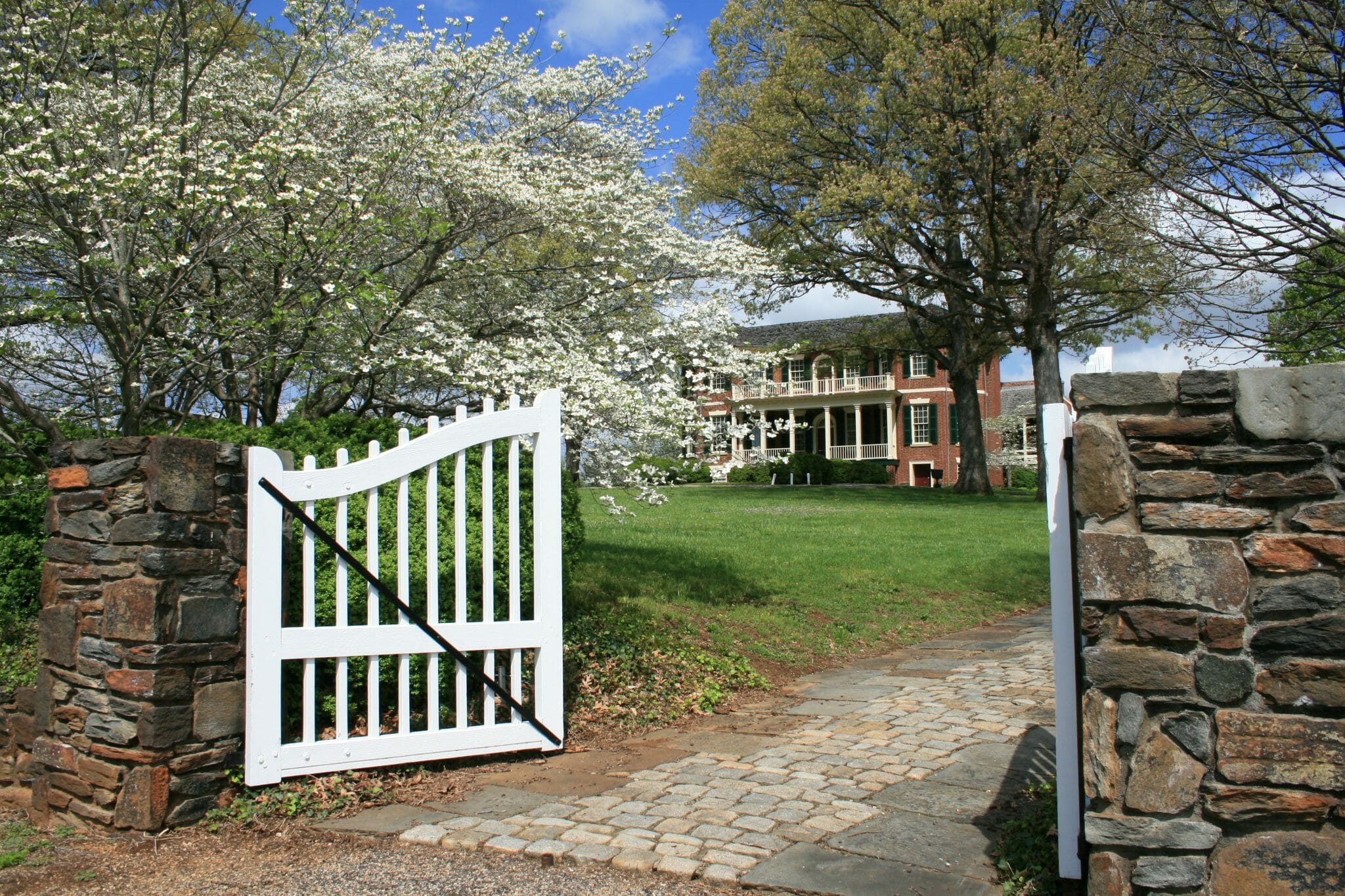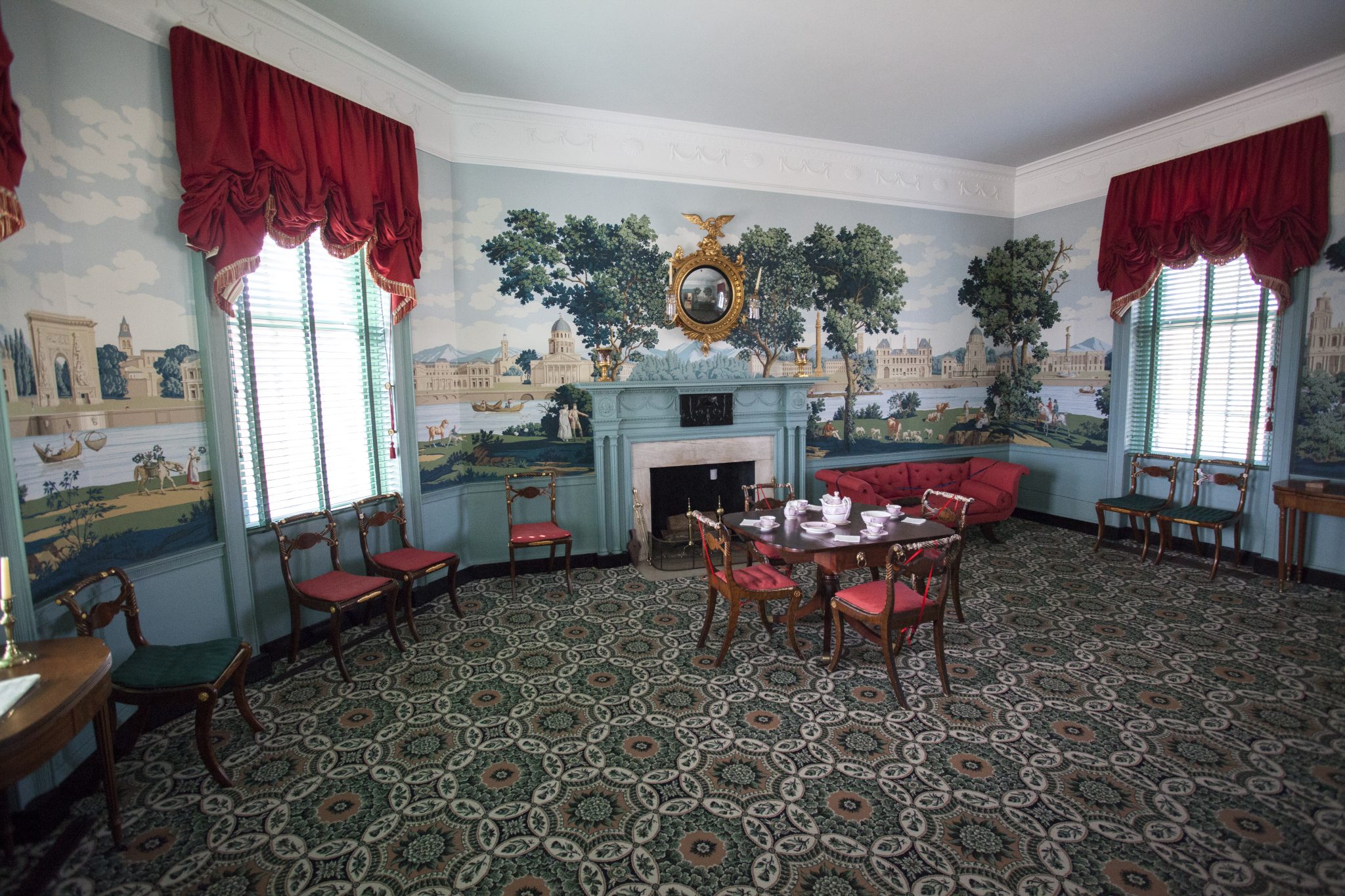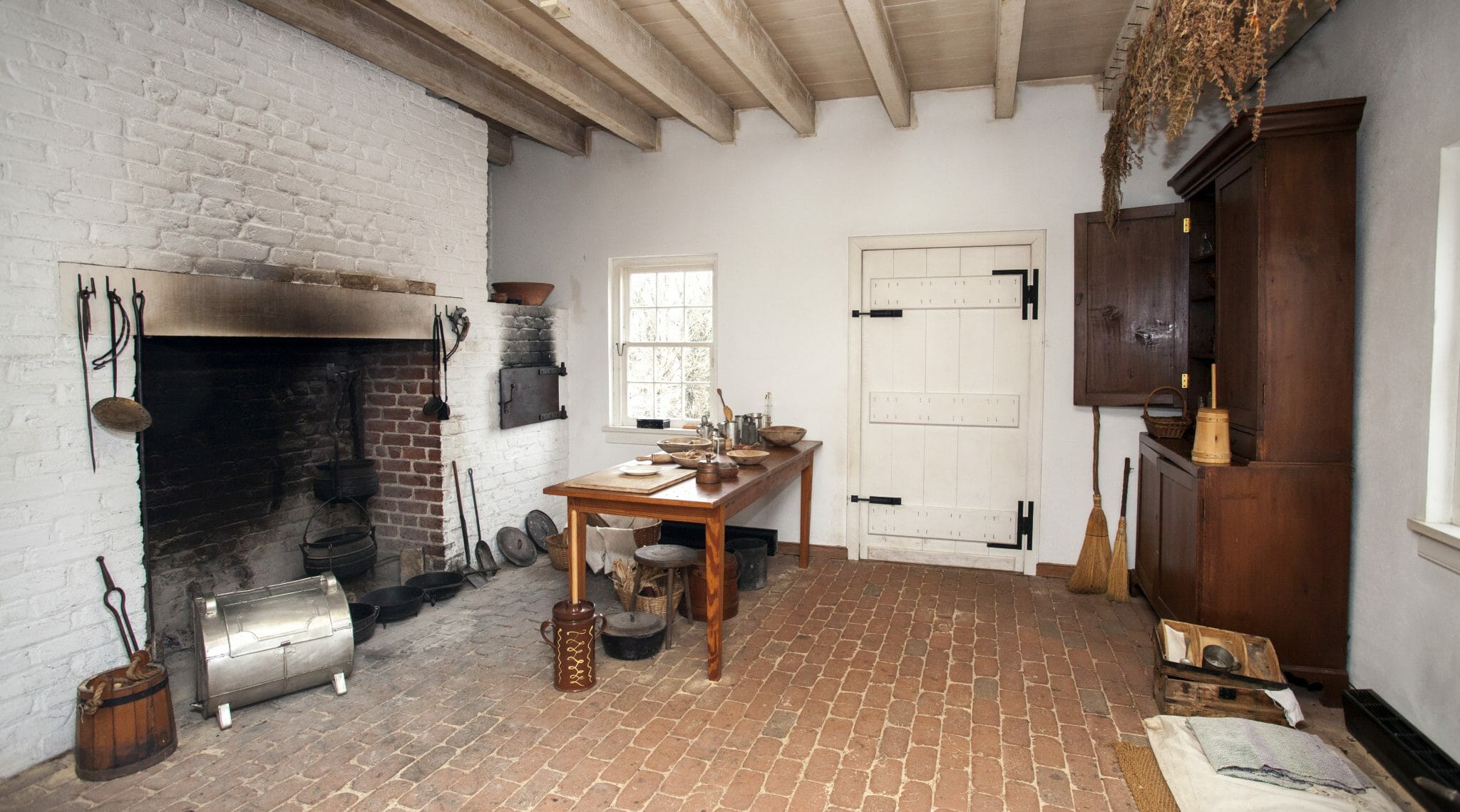
Just a few minutes away from the bustle of downtown, just off of the Blackwater Creek Trail, lies a place rich in history. Point of Honor may look like a big house at first glance, but it has served as home to many influential people throughout Lynchburg’s history. Take some time to learn about the backstory of this iconic mansion, and then go see it for yourself!
Ownership Timeline
The land where Point of Honor stands has a long history of ownership, from a Native American campsite to a modern museum. Below is a brief timeline of the groups who have owned Point of Honor.
Monacan Indians
Before settlers made their way into what is now Downtown Lynchburg, the land was wilderness. Native Americans, including the Monacan Indians, came to the spot to fish and hunt, leaving behind only stone fragments in the dirt. Attacks from other tribes, as well as the arrival of European settlers, drove the Monacans into what is now Amherst County.
 The Lynch Family
The Lynch Family
In 1745, a descendant of Pocahontas, an Englishman named John Bolling, was granted the patent to land along the James River. The next year, he sold these lands to an Irish Immigrant, Captain Charles Lynch (father of John Lynch). Charles Lynch died in 1753 and willed the lands that would house Point of Honor to his third son, Christopher. Christopher married Ann Ward in 1765. At the time of Lynch’s death, the land fell to his only daughter, Nancy Ann, who married Samuel Mitchell in 1786, the year Lynchburg was chartered.
The Cabell Family
During the 25 years of Cabell family ownership, 1805-1830, the farmland was transformed into an estate. In 1805, Dr. George Cabell purchased 737 acres that included not only the Point of Honor plot, but Daniel Island (now home to Griffin Pipe), Treasure Island and Woodruff Island. Cabell was best known as a surgeon and his most illustrious patient was Patrick Henry of Red Hill, whom he attended to during Henry’s final illness.
Despite this period being the most crucial to Point of Honor’s development, there is very little information about the time the Cabell’s spent there. It is believed that Cabell’s son Edmund, who was also a doctor, kept an office at Point of Honor for some time. In 1823, George Cabell died from injuries sustained in a fall from his horse. His widow continued to live at Point of Honor until her death in 1826, at which time the estate was inherited by their son William Lewis Cabell.
In 1828, William married Eliza Daniel. Their residency at Point of Honor was brief, as they both died of tuberculosis during the summer of 1830. As they were childless, Point of Honor was inherited by Judge William Daniel, Sr., Eliza’s father.
The Daniel Family
Judge Daniel was well known in the immediate area because he was the judge for the Campbell and Cumberland Circuits. After his daughter’s death, he moved into Point of Honor in 1831 and extensively remodeled the interior of the house, as fashion had changed in the 15 years since the house was built. Extensive paint analysis conducted in 1976 revealed that almost all of the brilliantly colored mantels and carvings were painted black which would be more in keeping with the contemporary Greek Revival mode. The Daniel family remained the owners of Point of Honor until 1848.
The Payne Family
David Bryce Payne owned Point of Honor from 1848 to 1857, during which time he brought further dramatic changes to the house. The Italianate Villa style front porch, which survived on the house until restoration began in the late 1960s, is similar in design to the house Payne built circa 1859 in town at the corner of 11th and Federal Streets. Updating older homes to add new design elements was a popular trend among Lynchburg residents at the time.
The Langhorne Family
In 1828, Maurice Langhorne and his brother Henry moved to Lynchburg from Cumberland County. Maurice rented Point of Honor from William Lewis Cabell for several years and opened the mansion to his brother’s family when their home “Chestnut Hill” burned in March 1828.
The Langhorne family returned to Point of Honor in 1857, when John Scaisbrooke Langhorne and his family rented the mansion from Judge William Daniel Jr. John was the son of Henry Langhorne who had stayed at Point of Honor after the fire at Chestnut Hill. John Langhorne and Charles Scott were partners in the Langhorne Mills, established in 1831 by Maurice and Henry Langhorne and located at the foot of the hill in front of Point of Honor.
 The Owen Family
The Owen Family
After the Langhorne’s left, Point of Honor was sold by Judge Daniel in 1862 to Col. Robert Latham Owen and his family. Owen was the president of the Virginia and Tennessee Railroad that ran westward from Lynchburg. During the Civil War, this railroad was one of the major ways to transport troops and supplies for the Confederacy.
The Litchford Family
Owen eventually sold the property. In 1876, the property was subdivided and purchased by T.V. Strange and L.E. Litchford, and by 1878, Litchford was listed as the sole owner of the mansion. Litchford was a grocery wholesaler, and wanted a house close to his business warehouse. His family occupied the house for over fifty years, until 1928.
During the Litchford’s stay, moderations were made to modernize the house. Indoor plumbing was installed and several additions were made, including the side porch and another bathroom. Over time, the outbuildings and gardens disappeared and new houses were built along Norwood Street, eliminating the country like feel the house had once had. In the 1920s, the Litchfords made the decision to move to Boonsboro Road, which was developing at the time. They built a new home on Peakland Place and put Point of Honor up for sale.
Recreation Center
In 1928, James R. Gilliam, Jr. purchased the house and deeded it to the City of Lynchburg. Point of Honor became a recreation center for the Daniels Hill neighborhood. The mansion doubled as a soup kitchen during the Depression, a nursery during World War II, and hosted countless neighborhood social functions through the years. All of the attention that the house received was crucial to its survival. The roof was kept sound, windows were replaced and the grounds were maintained.
The Restoration Period
In 1968, the City deeded Point of Honor to the Lynchburg Historical Foundation. By the spring of 1977, the house was restored and the furniture was put on display. The goal of the restoration was to recreate the era of George Cabell, Sr., since his time was the first decorative period of the house.
The Garden Club of Virginia selected Point of Honor as its 1977 Garden Restoration project, and successfully recreated a front lawn landscaping typical of the Cabell era.
In 1978, Point of Honor opened to the public. It is now managed by the Lynchburg Museum System and attracts thousands of visitors each year.
Visiting Point of Honor
Point of Honor is open for visitors every day except Thanksgiving, Christmas Eve, Christmas Day and New Year’s Day. Tours are offered Monday through Saturday from 10am to 4pm and Sunday from noon to 4pm. Check out their website to learn more about visiting.
